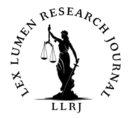Written By Harshit Verma,
Law College Dehradun
Novemeber 2024
The 44th Constitutional Amendment Act, which was enacted in 1978, is one of the most significant amendments to the Indian Constitution. It was enacted during the tenure of Prime Minister Morarji Desai, in response to the controversial 42nd Amendment, which was implemented under Prime Minister Indira Gandhi‘s administration during the 1975–1977 Emergency era.
The 44th Amendment aimed to reverse many provisions that granted excessive powers to the executive and undermined fundamental rights, restoring the democratic balance of the Indian Constitution after the Emergency.
Objectives of the 44th Amendment Act, 1978
The 44th Amendment Act, 1978 was introduced for achieving the following objectives:
- To ensure the Fundamental Rights were not restrictedor taken away by a transient majority in Parliament, it was necessary to provide adequate safeguards against recurrence of such a contingency in the future.
- To ensure that the power to proclaim an emergency under Article 352 of the COI, mustbe used properly and after due consideration and deliberation.
- To ensure that the basic features of the COI were not lightly interferedwith by Parliament in exercise of the power of constitutional amendment under Article 368 of the COI.
Right to Property (Article 31)
- Pre-44th Amendment: During the Emergency, Article 31, which guaranteed the right to property as a fundamental right, was altered. The government was given sweeping powers to acquire property, and property rights were limited. These changes made it easier for the government to acquire private property without proper judicial scrutiny.
- Post-44th Amendment: The 44th Amendment removed the right to property as a fundamental right. Instead, Article 300A was inserted, which made the right to property a constitutional legal right. This meant that property could still be acquired by the government, but the process was subject to legal remedies through ordinary courts, not under the framework of fundamental rights.
- Impact: While property rights were still protected, they were no longer on par with other fundamental rights, making it harder for individuals to challenge property acquisitions directly as fundamental rights violations. This shift was aimed at reducing the arbitrariness associated with earlier provisions.
Right to Life and Personal Liberty (Article 21)
- Pre-44th Amendment: The right to life and personal liberty under Article 21 was suspended during the Emergency. The government enacted laws allowing preventive detention without judicial review, which led to widespread abuse and violations of personal freedoms.
- Post-44th Amendment: The 44th Amendment restored the sanctity of Article 21, ensuring that the right to life and personal liberty could not be easily suspended. It introduced an important safeguard by limiting the duration of preventive detention to a maximum of three months without obtaining the opinion of an Advisory Board. This protected individuals against arbitrary detention.
- Impact: The amendment strengthened individual liberty by curbing the government’s ability to detain individuals without trial for prolonged periods, ensuring that any preventive detention had to be subject to a review process.
Suspension of Fundamental Rights during Emergencies (Article 359)
- Pre-44th Amendment: During the Emergency, Article 359 allowed the suspension of all fundamental rights, except for Article 21 (right to life). This led to the complete suspension of many essential rights, including freedom of speech and freedom of movement, with no recourse to courts.
- Post-44th Amendment: The 44th Amendment restricted the suspension of fundamental rights during a National Emergency. Now, only Article 21 (right to life and personal liberty) could be suspended, and other rights could not be suspended during an emergency.
- Impact: This provision protected most fundamental rights even during emergencies, ensuring that individual freedoms could not be completely overridden by the state, except for extreme situations where personal liberty was at stake.
Presidential Powers and Safeguards (Article 359)
- Pre-44th Amendment: The President had broad powers to suspend fundamental rights during the Emergency. This led to the widespread suspension of rights, including the right to move the courts for enforcement of fundamental rights.
- Post-44th Amendment: The 44th Amendment curbed the powers of the President, particularly in relation to the suspension of rights. Only Article 21 (right to life and personal liberty) could be suspended, while other fundamental rights were protected even during an emergency.
- Impact: This provision prevented the arbitrary suspension of rights and ensured that even in an emergency, citizens could retain their rights to freedom, except in the most extreme circumstances.
Strengthening of Judicial Review
- Pre-44th Amendment: During the Emergency, the judicial system was weakened, and the courts were unable to effectively challenge the government’s decisions, including those regarding violations of fundamental rights.
- Post-44th Amendment: The 44th Amendment reinforced judicial review by ensuring that the judiciary could oversee actions by the executive and legislature, particularly in relation to fundamental rights. Courts were given the authority to review the legality of laws that violated fundamental rights.
Impact: This safeguard ensured that judicial oversight remained a critical part of the constitutional framework, preventing the executive from acting unconstitutionally during emergencies or otherwise.
Conclusion:
The 44th Amendment (1978-79) had a transformative impact on Fundamental Rights in India. It was designed to prevent the abuses of power that occurred during the Emergency and to restore the balance between the state’s power and individual freedoms. The key impacts included:
- Restoration and strengthening of the Right to Life and Personal Liberty (Article 21).
- Removal of the Right to Property from fundamental rights, though it remained a legal right under Article 300A.
- Limiting the scope of emergency powers, particularly the suspension of rights during a National Emergency.
- Reinforcement of judicial review to ensure that fundamental rights were protected from executive overreach.
- Curbing the misuse of preventive detention powers.
https://vajiramandravi.com/quest-upsc-notes/44th-constitutional-amendment-act
https://byjus.com/free-ias-prep/44th-amendment-act
https://blog.ipleaders.in/all-you-should-know-about-44th-amendment-of-the-indian-constitution


